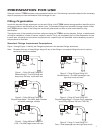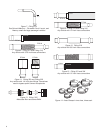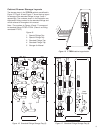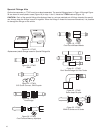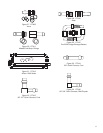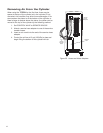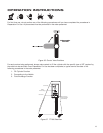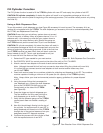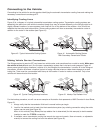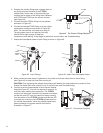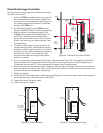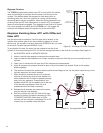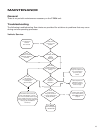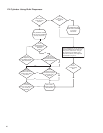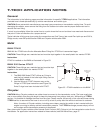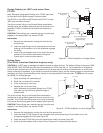
15
Connecting to the Vehicle
Connecting to the vehicle for service requires identifying the automatic transmission cooling lines and making the
necessary connections to exchange ATF.
Identifying Cooling Lines
Figure 40 is a diagram of a typical automobile transmission cooling system. Transmission cooling systems are
essentially the same from one vehicle to another though they may be routed differently or the fittings might be in
slightly different locations. In some systems, both lines will run to the bottom of the radiator – this is found on
radiators that have top and bottom tanks. Some cooling systems will have a secondary transmission cooler in
addition to the cooler in the radiator (see Figure 41).
Figure 40. Typical Automobile Cooling System Figure 41. Automobile Cooling System
With Secondary Transmission Cooler
Making Vehicle Service Connections
The fittings required to service ATF vary based on vehicle make, and sometimes from model to model. Make sure
the vehicle is shut off and cool. Do not open a transmission system that is hot and under pressure. Figure 42
shows some typical hookup locations. Location #1 is the fittings at the transmission. Location #2 is the fittings at
the radiator. Location #3 shows a location (typical to foreign vehicles) where a rubber hose changes to a steel
tubing line. There must be a removable hose clamp at this location in order to make a connection. Only a few
vehicles will be serviced at this location.
For the hookup procedure, we will use as an example an illustration that represents a 1992 Chevrolet 4-door Blazer,
Figure 43.
1. Always verify that the transmission fluid level is normal before you begin.
2. Look for the easiest spot to break into the transmission system (any existing connection along the entire
system can be used, see Figure 42).
Note: In this vehicle (Chevy Blazer) the top radiator line is determined (for this example) to be the easiest
location to make the T-TECH connection.
3. If available, use a transmission cooling line wrench (an open end wrench, flare nut wrench, or adjustable
wrench) to remove the cooling line from the radiator (see Figure 43).
Cooling
Lines
Upper
Radiator
Fitting
Lower
Radiator
Fitting
Upper
Transmission
Fitting
Lower
Transmission
Fitting
Cooling
Lines
Lower
Radiator
Fitting
Upper
Transmission
Fitting
Lower
Transmission
Fitting
Secondary
Transmission
Cooler
Location #1
Transmission
Fittings
Location #2
Upper or Lower
Radiator
Fitting
Location #3
Upper or Lower
Cooling
Line
Cooling
Lines
Upper
Radiator
Fitting
Lower
Radiator
Fitting
Upper
Transmission
Fitting
Lower
Transmission
Fitting
Figure 42. Typical Cooling Hookup Locations Figure 43. Hookup Top Radiator Line



